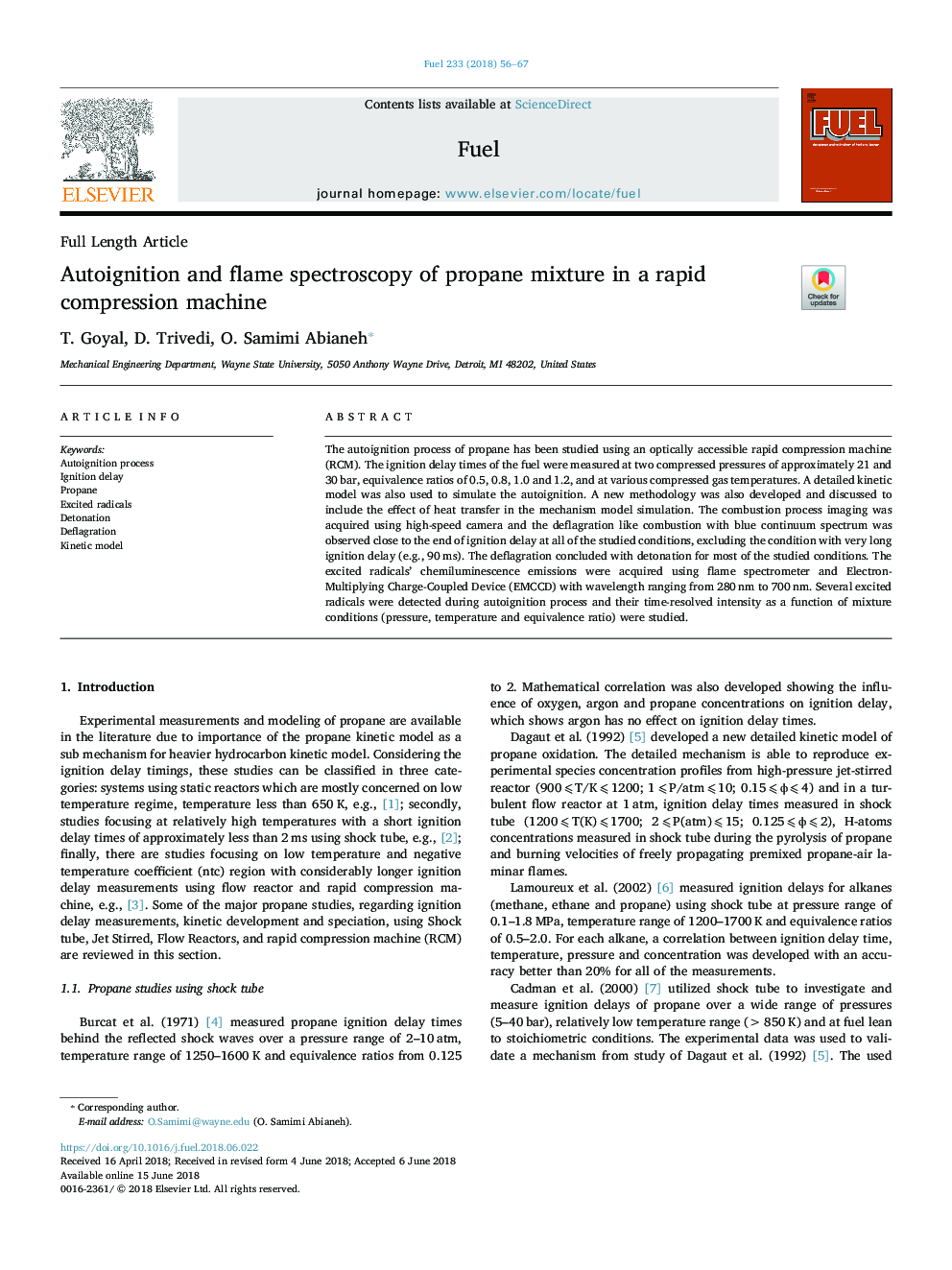| Article ID | Journal | Published Year | Pages | File Type |
|---|---|---|---|---|
| 6630171 | Fuel | 2018 | 12 Pages |
Abstract
The autoignition process of propane has been studied using an optically accessible rapid compression machine (RCM). The ignition delay times of the fuel were measured at two compressed pressures of approximately 21 and 30â¯bar, equivalence ratios of 0.5, 0.8, 1.0 and 1.2, and at various compressed gas temperatures. A detailed kinetic model was also used to simulate the autoignition. A new methodology was also developed and discussed to include the effect of heat transfer in the mechanism model simulation. The combustion process imaging was acquired using high-speed camera and the deflagration like combustion with blue continuum spectrum was observed close to the end of ignition delay at all of the studied conditions, excluding the condition with very long ignition delay (e.g., 90â¯ms). The deflagration concluded with detonation for most of the studied conditions. The excited radicals' chemiluminescence emissions were acquired using flame spectrometer and Electron-Multiplying Charge-Coupled Device (EMCCD) with wavelength ranging from 280â¯nm to 700â¯nm. Several excited radicals were detected during autoignition process and their time-resolved intensity as a function of mixture conditions (pressure, temperature and equivalence ratio) were studied.
Related Topics
Physical Sciences and Engineering
Chemical Engineering
Chemical Engineering (General)
Authors
T. Goyal, D. Trivedi, O. Samimi Abianeh,
